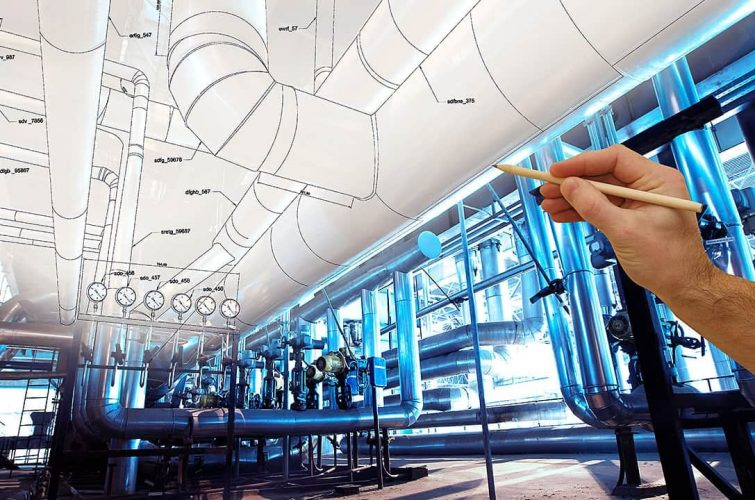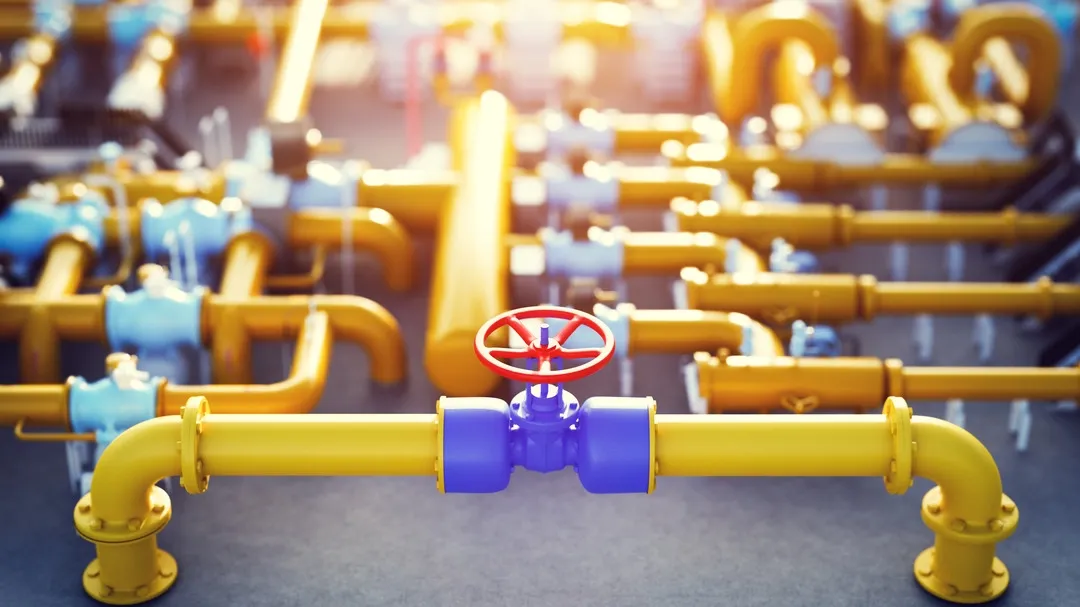Gas distribution system design and Engineering
I-maximum specializes in the engineering design of LPG installations, offering efficient and safe solutions to guarantee the gas supply to your system. Our team of specialists has extensive experience in technical gas drawings design and we will offer you innovative gas solutions.
Our design team can produce custom 3-D and 2-D technical drawings based on individual client requests. All gas devices manufactured in our factory are always compliant with the drawings prepared by our design team.
I-MAXIMUM offers technical design services using our equipment. We can create comprehensive projects that include construction elements and prepare detailed technical drawings.
Our experts are ready to create reliable and secure LP gas installations that adhere to top-quality standards, whether you're building a new structure or updating current systems.
Technical drawings of LPG vaporization stations, type I-MAXGAS

Our main activity is implementing turnkey technical solutions for our clients, with a focus on designing SNG gas systems. We undertake the full range of project work, which includes:
Technical Project (for acceptance purposes and comprehensive executive development for investor needs) includes:
Construction Scope:
- Tank foundation - complete with description
- Gas pipeline supports
- Base plate for pump system
- Guidelines for installing the evaporator-mixer system
Electrical Scope:
- Cable routes for all receivers
- LV distribution board
- Power supply, control systems, and automation - schematics with description
- Gas detection system for external LPG setup - schematics with description
Installation Scope (gas + air):
- Gas tank fittings
- Gas installation technological diagram - itemization and execution conditions
- Integration of compressed air supply to mixer
- Diagram for installing the evaporator-mixer system with description
Additional Developments:
Technological guidelines for developing EIA documentation during environmental approval stages.
You may also be interested
When we use SNG (Propane-AIR)?
most frequently asked questions
What is SNG, and where is it applied?
What is the cost of SNG system and how to choose the equipment?
What is SNG blender (LPG Air Blender)?
(BioLPG) BioPropan, bioDME - what is it? Can BioLPG be used for transportation?
What is SNG, and where is it applied?
What is SNG blender (LPG Air Blender)?
What is the cost of SNG system and how to choose the equipment?
(BioLPG) BioPropan, bioDME - what is it? Can BioLPG be used for transportation?
Gas System Design
Developing a gas system takes not only technical aptitude and conformity with regulations, but also a profound understanding of customer needs, safety standards, and operational efficiency. At I-Maximum, we specialize in creating reliable, comprehensive, and tailored gas system designs for a wide range of commercial and industrial applications. Our design services are based on years of experience and commitment to quality, guaranteeing that each system that we develop complies with the strictest requirements for safety, efficiency, and cost-effectiveness.
Comprehensive Approach to Gas System Design

A properly designed gas system is the core of a safe and efficient energy infrastructure. Our team of qualified engineers and project managers starts each project by thoroughly analyzing the unique conditions and aims of the customer. Whether it is a small facility or a complex industrial site, we elaborate a gas system that fits the scale and specifics of the installation.
The usual I-Maximum design process includes the following steps:
Initial site assessment and evaluation of local peculiarities.
Economic and technical feasibility study.
Selection of the appropriate gas equipment and related components.
Creation of detailed engineering documentation and layout drawings.
Coordination with regulatory authorities for approval and certification.
The holistic approach ensures that all aspects of the gas infrastructure are accurately engineered for leveraged performance.
Key Elements of a Modern Gas Distribution System
Every properly devised gas system relies on integrating the right components into a single cohesive network. At I-Maximum we especially focus on the coordination between gas tanks, vaporizers, pipelines, valves, pressure regulators, and safety devices. The goal is to achieve continuous and safe gas flow under different operational conditions.
Our engineers select and configure components that are based on many factors, including the type of gas used (LPG, propane-air mix, natural gas), required pressure and flow rates, environmental conditions, and operational load and peak demand scenarios.
All these aspects are carefully considered to prevent under- or over-dimensioning, which could cause system failures or inefficiencies.
Moreover, we take into account possible future scalability. Our gas system designs are adaptable, allowing for the integration of additional units or system expansion with minimal downtime.
Safety and Compliance as Core Principles
Safety is a paramount concern in the design of gas systems. Our company strictly adheres to international and local regulations, such as EN, ISO, and national gas safety codes. From explosion protection zones to emergency shut-off systems, every element is embedded with attention to risk mitigation.
All our gas distribution system designs are integrated with safety systems that protect both staff and equipment. These systems include the following points:
Gas leak detection sensors and alarms.
Overpressure protection with relief valves.
Emergency shutdown valves with remote control options.
Profound ventilation system in enclosed areas.
Grounding and lightning protection for above-ground applications.
By providing safety in the design from the very beginning, we help our customers avoid possible hazards, decrease insurance risks, and meet the inspection requirements during commissioning.
From Design to Implementation: A Full-Cycle Solution

At I-Maximum, we do not just design systems – we guide our clients through the entire technical process. Once the gas system design is done and approved, we provide support in equipment delivery, supervised installation, and commissioning. In addition, we can integrate remote monitoring and automation solutions for customers preferring advanced supervision.
Our experts are skilled in managing gas system projects of any size – from modular containerized units for remote locations to sophisticated multi-zone industrial networks. With our solutions, customers benefit from reduced energy losses, improved system lifespan, and dependable operation even under peak loads.
Advantages of Choosing I-Maximum for Gas System Design
Customers prefer I-Maximum not only for our technical expertise but also for our commitment to reliable project delivery. We guarantee smooth communication between all parties engaged in the project, including architects, builders, utility providers, and regulatory authorities. This coordination lowers delays and ensures that the system is ready for deployment without expensive revisions.
The benefits of our technical design service reflect the following:
Customization. Every system is adjusted to the client’s needs and the site’s peculiarities.
Cost-efficiency. We optimize system layout and component selection to decrease installation and operational outgoings.
Technical support. Our design experts remain involved throughout the implementation, providing clarification and adjustments as needed.
Paperwork. We provide full technical documentation, including piping schematics, deployment instructions, and service manuals.
Whether you require a gas system for a new construction project or an upgrade for a current infrastructure, our experience guarantees optimal results at every stage.
Partner with Experts in Gas System Engineering
Gas system design is an overwhelmingly important task that requires experience, precision, and elaborate knowledge of technical and regulatory standards. The I-Maximum team provides high-performance and future-ready designs that maintain safe, cost-effective, and environmentally responsible gas use. Our solutions have been successfully implemented across a variety of industries, from food processing and agriculture to energy and manufacturing.
If you are looking for a partner to develop a high-quality gas distribution system design, trust I-Maximum to receive tailored engineering with results that last.












